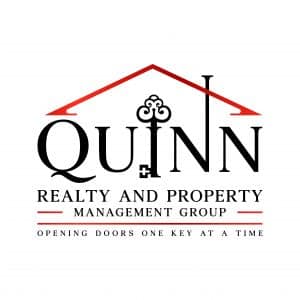Optimizing Home Administration Operations for Long-Term Productivity and Renter Retention

Reliable Communication Strategies
Clear and reliable interaction makes certain that all stakeholders, consisting of property owners, lessees, maintenance staff, and administration, are on the same page, leading to smoother procedures and raised renter contentment. Residential property supervisors should clearly detail lease terms, upkeep procedures, and communication channels to prevent misunderstandings down the line.
Using technology can also considerably boost interaction efficiency in property management. Carrying out building monitoring software that permits real-time updates, automated notifications, and easy documentation can improve communication processes and boost total functional performance. In addition, normal interaction via various networks such as e-mail, telephone call, and in-person conferences can aid cultivate favorable connections with tenants and address any problems immediately.
Innovation Combination for Maintenance
In the realm of home administration optimization, an essential component that boosts functional performance and maintenance procedures is the combination of innovation for improving upkeep jobs. By incorporating technology right into upkeep operations, residential or commercial property managers can profit from boosted work order management, aggressive maintenance scheduling, and boosted interaction with maintenance groups and renters.
One substantial benefit of technology assimilation in maintenance is the ability to centralize work orders and track upkeep requests electronically. This enhances the process of getting, designating, and completing maintenance jobs, causing quicker response times and increased lessee satisfaction. Furthermore, anticipating maintenance technologies can aid in identifying possible issues before they intensify, decreasing the chance of costly fixings and minimizing downtime.

Data-Driven Choice Making
Utilizing data-driven understandings empowers home managers to make educated choices that enhance functional efficiency and make best use of possession efficiency. Quinn Realty and Property Management. By leveraging data analytics devices and technologies, home managers can draw out beneficial information from different resources such as tenant comments, maintenance records, and market patterns. This data can give essential understandings into renter choices, functional traffic jams, and cost-saving opportunities
Data-driven decision-making allows residential or commercial property managers to determine patterns and fads that might not be obvious through standard observation. Analyzing maintenance data may expose persisting concerns in particular devices, permitting supervisors to proactively resolve underlying troubles and protect against future costly repairs. Moreover, by keeping track of tenant contentment metrics and lease renewal rates, residential or commercial property managers can tailor their services to satisfy renter expectations, eventually improving tenant retention and long-term success.
Furthermore, data-driven understandings can also notify tactical investment choices by highlighting areas for renovation or growth based on market need and efficiency metrics. Overall, including data-driven decision-making processes into home management procedures can lead to a lot more efficient source allocation, improved tenant contentment, and enhanced productivity over time.
Renter Contentment Initiatives
Attracting insights from data-driven decision-making, property supervisors can implement targeted occupant satisfaction efforts to boost general leasing experiences and foster long-term renter partnerships. By understanding occupant choices and discomfort points, home supervisors can customize their solutions to meet the particular needs of their renters, inevitably leading to higher fulfillment degrees and enhanced occupant retention prices.
One effective renter fulfillment campaign is to establish clear lines of communication with occupants to resolve any concerns quickly. Normal feedback surveys can also offer important insights into lessee satisfaction levels and areas for improvement. Home supervisors can utilize this responses to make essential changes and reveal lessees that their opinions are valued.

Additionally, organizing community events and go to these guys amenities that provide to the interests of tenants can develop a feeling of belonging and improve overall satisfaction. By fostering a favorable and interesting area environment, home managers can reinforce occupant connections and urge long-lasting leases, eventually improving success and tenant retention in the lengthy run.
Improving Operational Procedures
Effectiveness is paramount in property administration, necessitating the optimization of functional processes to boost productivity and make the most of resources. Improving functional procedures entails determining areas for improvement, getting rid of redundancies, and implementing systems that improve general performance. One essential element of simplifying operational procedures is the integration of technology options such as residential or commercial property management software, which can automate jobs, enhance interaction, and give real-time data insights. By digitizing processes like maintenance requests, rent collection, and lease revivals, home supervisors can save time, decrease mistakes, and improve tenant complete satisfaction.
Moreover, carrying out standard procedures and workflows can aid develop uniformity across homes, lower confusion, and streamline day-to-day operations. Routinely assessing and enhancing these processes is necessary to adjust to click site altering market conditions, occupant needs, and regulatory needs. By continually looking for ways to simplify operational processes, property supervisors can not just increase their own efficiency however likewise supply better solutions to renters, inevitably bring about lasting profitability and tenant retention.
Conclusion
In final thought, optimizing residential property administration procedures via effective interaction, innovation assimilation, data-driven decision production, occupant fulfillment initiatives, and improving procedures is vital for lasting success and tenant retention. By applying these approaches, property managers can improve functional effectiveness, decrease costs, and boost renter contentment, eventually bring about enhanced earnings and tenant loyalty. It is crucial for building management business to continually evaluate and change their operations to satisfy the Quinn Realty and Property Management advancing needs of both renters and the marketplace.
Clear and efficient interaction ensures that all stakeholders, including residential property proprietors, tenants, maintenance personnel, and monitoring, are on the very same page, leading to smoother operations and enhanced renter satisfaction - Quinn Realty and Property Management. By checking lessee satisfaction metrics and lease renewal rates, home supervisors can customize their solutions to fulfill tenant expectations, ultimately improving tenant retention and long-lasting success
By constantly seeking ways to improve operational processes, residential or commercial property managers can not only increase their very own performance yet additionally supply far better solutions to renters, ultimately leading to long-term productivity and occupant retention.
In final thought, maximizing home administration operations with effective communication, modern technology assimilation, data-driven decision making, renter satisfaction campaigns, and simplifying processes is vital for long-lasting productivity and occupant retention (Quinn Realty and Property Management). By executing these strategies, property supervisors can improve functional performance, minimize costs, and boost renter satisfaction, eventually leading to increased productivity and occupant loyalty